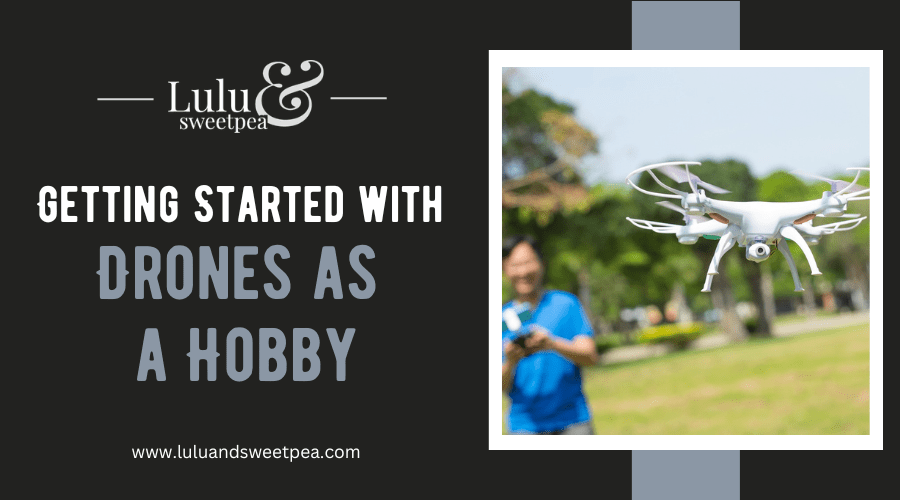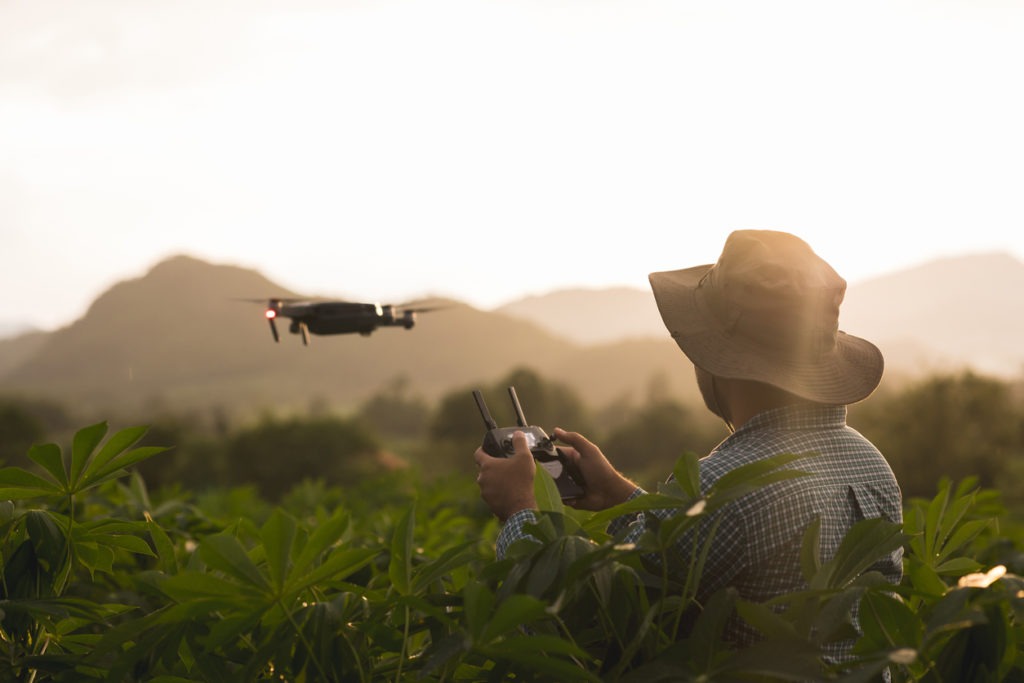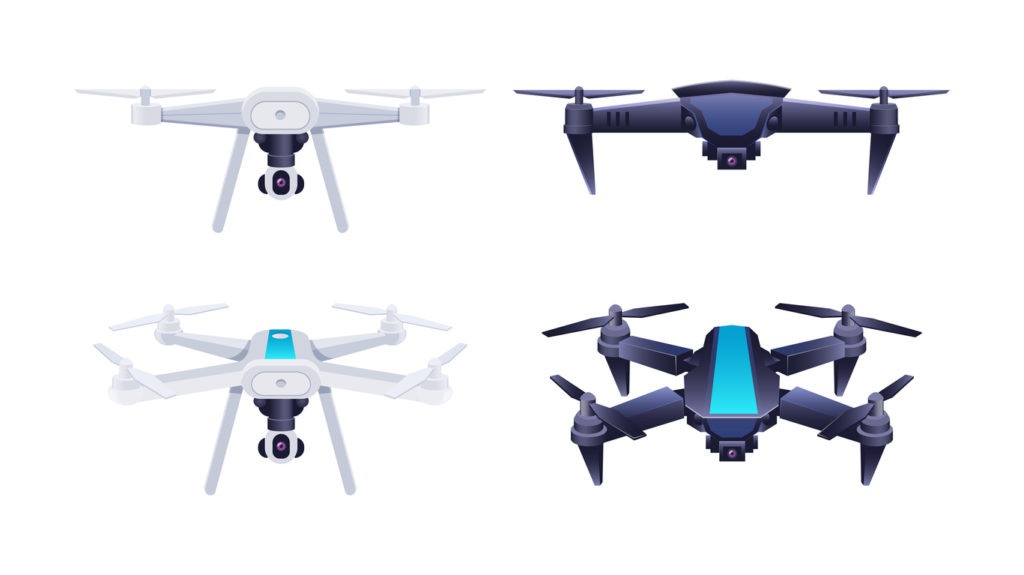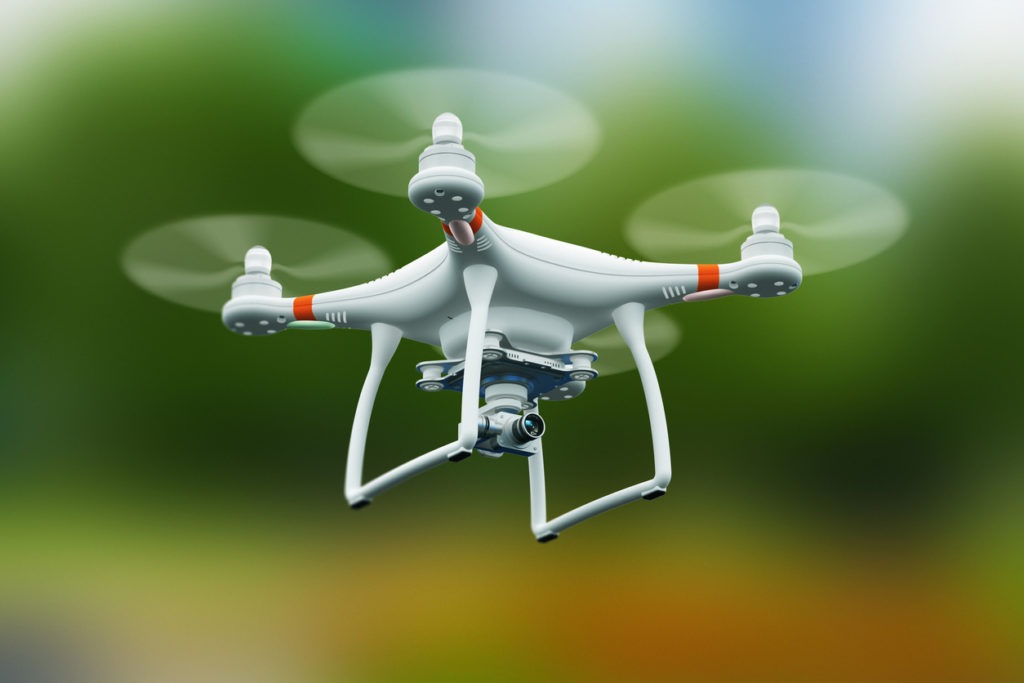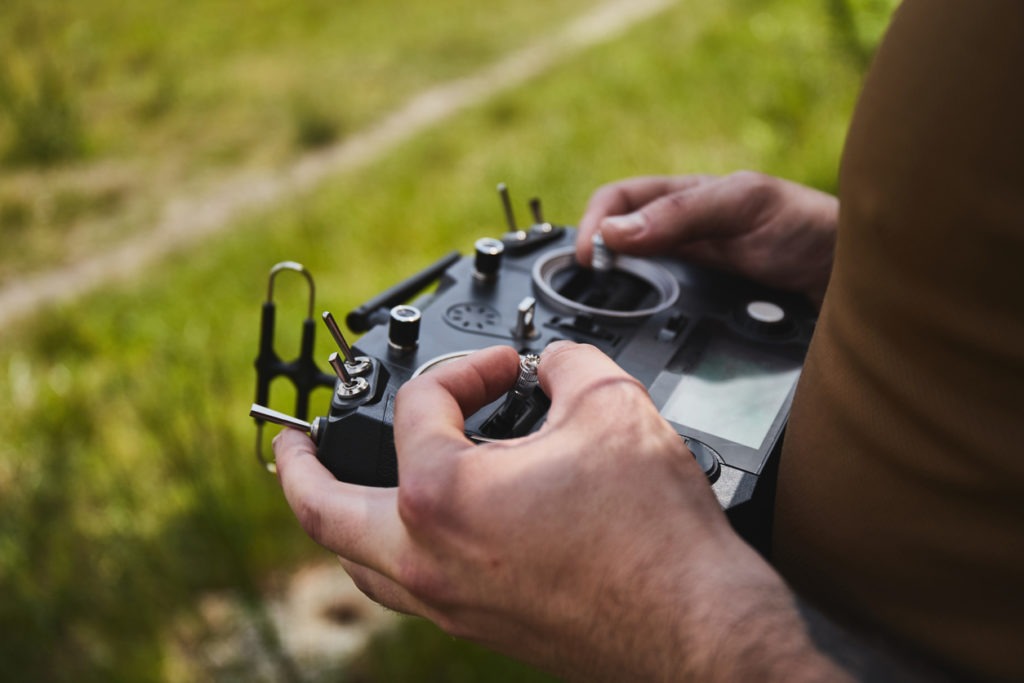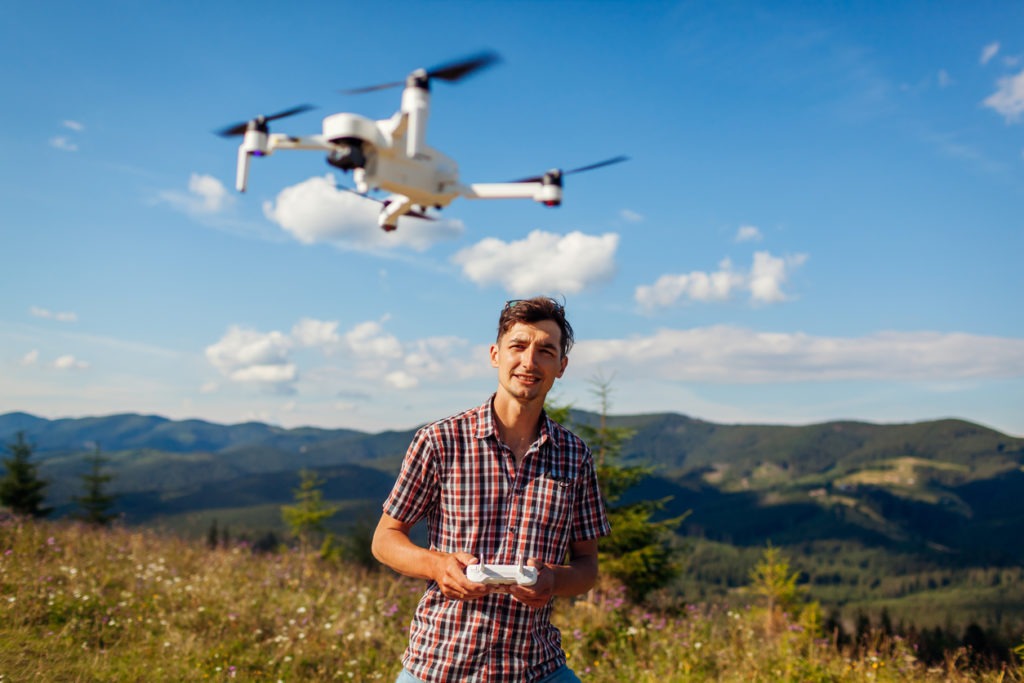The drone industry has experienced a rise (pun intended) in popularity. Racing drones is a brand-new sport that has emerged as a result of technological advancements from being merely an intriguing toy. The use of drones and UAVs are becoming more common. You don’t have to wait for them to take over the skies before you enter the world of airborne gadgets, though. Your life can gain a completely new dimension from drones surprisingly and enjoyably. Here are the basics to help you start your drone hobby.
Beginner’s Guide to Drones
Step 1: Choose Your Drone
Choosing the best drone for you is the first step in using a drone. If you can’t get up in the air and put the theories you’ve read about into practice, they’ll just be words on a page. Choosing a drone can be difficult because there are so many options available, all of which claim to be excellent for beginners.
When it comes to picking your first drone, there are two ways to approach the decision. One strategy is to purchase the cheapest toy drone available and plan to crash it frequently without worrying about your investment. The alternative strategy is to purchase a drone that you can develop with and that can do the things you ultimately want to be able to do, like take cool photos and videos. Only you know which kind of drone will work best for your needs in terms of both price and objectives.
Toy Drone
One of the small drones, probably costing under $100, is a toy drone. It might even be okay to fly inside. These typically have a separate controller without a screen, few intelligent features, and complex flight aids. Additionally, they typically do not bring cameras.
If learning how to fly a drone is your main objective, a toy drone might be your best bet. If you want to start drone racing or develop your flying skills, it might also be the best option for you. Starting with a small, inexpensive drone may seem counterintuitive, but because it lacks all the extras, you won’t be able to rely on them at all and can instead concentrate on perfecting your flying techniques.
GPS & Camera Drones
The best place to start for you is probably a mid-level camera drone if your main objective is aerial photography and you’re less concerned with the specifics of top-level flight control. The main benefit of most camera drones is that they frequently also include GPS, which makes them simple to fly and ideal for beginners. They might also have other beneficial capabilities that aid beginners in having safe and successful flights, like stable hovering, obstacle avoidance, and return-to-home buttons.
Step 2: Know Your Drone
You must get to know a drone once you have one in your possession. Before you start flying, spend some time with the user’s manual because different drone manufacturers and models will all differ slightly. But if it’s a quadcopter, whether it’s a toy drone or a camera drone, they all have these features:
Frame
The quad’s X- or +-shaped arms and body serve as the glue that holds all the components together. It could have a foldable construction for easy transport or a rigid frame with fixed arms and landing gear.
Motors
These are the mechanisms that give the propellers their power. Because they are quieter and more powerful, brushless motors are becoming much more common. For best performance, these might require regular cleaning.
ESC (Electronic Speed Control)
These link the battery and the motors, sending signals to each to control the speed of the propellers on the drones. This is how the drone responds to the controller’s instructions. The ESC is typically concealed beneath the shell, which may or may not be detachable, in most drones.
Flight Control Board
This is the drone’s “brain” or “computer,” which sends signals to the ESCs to convert electrical signals from the controller into useful information. It won’t be necessary for the typical beginner to do anything with this.
Radio Receiver
The drone picks up the signal from the remote controller at this point. It could be flush with the drone or have an antenna.
Propellers
These are the rotating plastic blades that are affixed to the end of each arm to lift the drone and control its motion. To move the drone in various directions, the propellers independently spin at various speeds. Since this is the component of a drone that breaks the most frequently, spares will typically be included.
Battery
In-camera drones, the parts are typically detachable, though toy drones might not. Depending on the drone model, it may be charged directly or using a separate charger. Have a few extra batteries on hand if your drone’s battery is detachable if you want to extend flight time.
Gimbal
A camera and a gimbal will be included with a camera drone. The device that keeps the camera steady while it is in flight is called a gimbal. The ability to control the camera angle through the gimbal may also depend on the drone.
To understand how your drone functions and to be able to perform some simple troubleshooting if issues arise, it’s crucial to understand the components of your drone. Additionally, being aware of the main parts of your drone will make it easier for you to perform some simple, regular cleaning and maintenance.
Step 3: Know Your Controller
The most crucial component of your drone is probably the remote controller. The drone cannot operate without it. It is also arguably the part that intimidates people the most, especially if they are unfamiliar with remote-control cars or video games. However, with a little bit of practice, using the controls will come naturally. Before you start flying, it’s helpful to become familiar with the controller’s anatomy so you’ll know what to expect. If you want to become familiar with the controls before flying, you might want to try out a flight simulator as it can be difficult to understand on paper.
The Left Stick Controls:
Throttle
This is how the drone’s height, or altitude, is controlled. The drone rises when you move the left stick forward or away from you. Pushing away from you or backward stops ascent or initiates a decent.
Yaw
The drone is pivoting in this manner. The term “pivot” describes how the drone will turn around to face a different direction. Pushing the left button causes the drone to pivot to the left, and pressing the left button again causes it to pivot to the right.
The Right Stick Controls:
Pitch
The drone moves forward and backward in this manner. The drone can be propelled forward by pushing the right stick. The drone can be moved backward by pushing the right stick.
Roll
The drone moves to the left and right in this manner. The drone moves to the left while still facing forward when you move the right stick to the left. It is comparable to sliding or taking a sidestep to the left. The drone “slides” to the right when you move the right stick in that direction.
Step 4: Learn Some Tips for a Safe Flight
A piece of plastic and metal spinning erratically in the air with those plastic blades is a recipe for disaster. Follow these safety recommendations to avoid harm to you or others:
- Keep your fingers, hair, and other body parts away from spinning propellers because they can cut you. Additionally, you can use propeller guards, which might be a separate purchase or be included with your drone.
- Unless you have a really small toy drone, avoid trying to fly inside. There are numerous barriers, objects, and surfaces inside.
- To practice flying your drone, locate a space outside that is open and free of obstructions like trees, buildings, overhead wires, etc.
- Keep in mind that the higher you go, the windier it usually is. Until you are more certain that your drone can withstand the conditions, keep it at a relatively low altitude.
- Avoid flying too close to the ground to avoid unstable flight caused by propeller wash. Go up to about seven to ten feet when you first take off to get your bearings before continuing.
- Use the Return to Home button with caution. If there isn’t a direct route back to the takeoff point, pressing Return to Home without your drone having obstacle avoidance sensors could cause it to run into a barrier.
- Remain within the controller’s visual field. You risk having a flyaway situation or a drone that crashes into some trees if you send your drone beyond the controller’s maximum range. The drone model determines the controller range and how the drone will react if the controller signal is lost.
- Lessen the interference from controllers. Cell phones, powerlines, tall buildings, and radio towers can all cause radio or magnetic interference on the radio frequency that transmits signals from your controller to your drone.
- Never transfer control of a flight to another person. If a friend wants to try, let them take off from the ground after you land the drone.
Step 5: Prepare for Emergencies
Once you’re airborne, you’ll inevitably run into issues of various kinds, whether they relate to your drone or controller, the environment, the weather, or just your inexperience. Knowing some of the potential trouble spots and having a strategy for dealing with them if they arise is particularly crucial for a beginner pilot. The following are some emergencies you might experience and how to handle them.
Loss of Controller Link
Your drone may suddenly stop responding to your control inputs. This might occur if your controller radio frequency is being interfered with or if you have flown outside of its effective range. With many drones, including DJI drones, you can plan for this possibility by deciding in your settings what the drone should do in this situation. Normally, the choices are Return to Home, Automatic Landing, or Hover in Place. Return to Home is probably the best option to choose if you’re a novice pilot.
If your drone model doesn’t offer these options, you might find yourself in a fly-away drone situation if the controller connection is lost. Having a tracking device attached to your drone will help you avoid losing it and will allow you to find it if it does fly off.
Fly Away
Your drone may fly away from you if it loses contact with your controller, but it also may do so for other reasons, such as a motor or propeller failure or a software glitch. However, there are some things you can do in advance to mitigate a flyaway. Make sure your controller and drone’s firmware are both currents at all times. Before taking off, inspect the propellers for any signs of damage. Verify that Return to Home is selected in your loss of connection link settings.
Make sure to keep your drone visible at all times while you’re out flying. This will make it easier for you to keep an eye on your drone and let you know if it starts to stray so you can direct it back in the right direction. A tracker might be your best option if your drone flew away to locate its final resting place.
Low Battery
Your drone will have different pre-programmed responses to running out of battery depending on the type it is. When the battery is too low to continue, it may either land where it is or automatically return home. When the battery runs out, a low-cost drone might simply fall where it is. Understand what will happen to your drone when the battery is low. Additionally, keep an eye on the battery indicator while you’re flying and try to keep it closer to your house as it approaches the red so you have time to land before the battery runs out.
Wind Gusts
Even if the sky is generally clear and still when you begin your flight, unexpected wind gusts can surprise you. It’s best to avoid attempting to ride out a strong wind if you’re having trouble keeping the drone on course. Before sending the drone back up, bring it back down and wait a while to see if the wind will die down. Choosing to land on a roof or in a tree is preferable.
Disorientation
When flying a drone, this has almost always happened to new beginners. Things are spiraling out of control, the sticks suddenly don’t seem to be acting the way you want them to, and you’re not sure which direction the drone is facing. The best course of action in this situation is to either press the pause button or if you’re panicked, the Return to Home button.
If your drone doesn’t have a Return to Home feature, try hovering steadily for a few minutes to regain your bearings before continuing your flight, or bring the drone down to land wherever it may be. Navigation lights are also useful for staying oriented because they can be used to determine which way the drone is facing from the red, green, and/or blue lights.
Conclusion
These are the basic things you should be aware of before beginning your drone hobby. You will undoubtedly have a good and enjoyable starting experience if you practice and learn these fundamentals.
